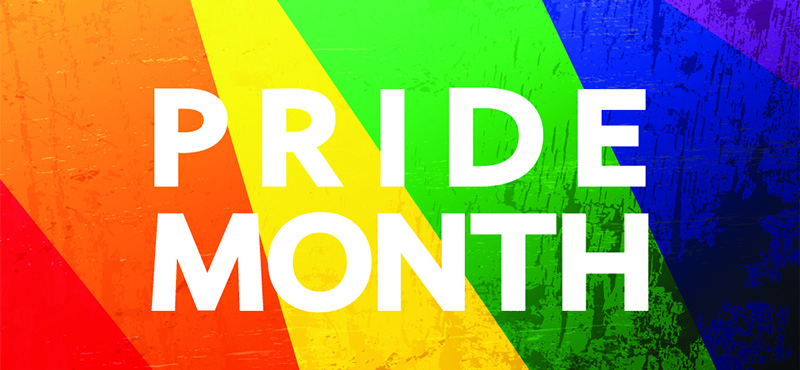Pride month 2022 is here! Established in June to commemorate the 1969 Stonewall Riots, Pride month represents a time to celebrate the LGBTQ+ community, take stock of the struggles its faced against discrimination and harassment, and reflect on the impact that LGBTQ+ people have made on history—including on screen. While there is still progress to be made, LGBTQ+ television characters, shows, plots, and issues have made important advances over the past decades.
Take a look back at some of the milestones that brought us to where we are today—the TV “firsts” that broke new ground, introduced the world to important ideas, and paved the way for greater diversity and acceptance in entertainment.
First show to feature an openly gay character
The Norman Lear comedy All in the Family, groundbreaking in so many ways, paved the way by featuring TV’s first openly gay character. In the 1971 episode “Judging Books By Covers,” Archie Bunker—as usual—gets in hot water with some bigoted comments only to discover that his own friend Steve is, in fact, gay. Despite this TV first, Steve only appeared in one episode. The first recurring LGBTQ+ character would have to wait until the following year, with Peter Panama (played by Vincent Schiavelli) on the short-lived ABC sitcom Grant’s Tomb.
First on-air kiss
Far from appearing on an edgy, avant-garde show, the first LGBTQ+ kiss on American television appeared on top-rated LA Law, which, in 1991, was pulling in 60 million viewers a week. In the scene, lawyer C.J. Lamb (Amanda Donohoe), who identified as bisexual, planted a brief kiss on colleague Abby Perkins (Michelle Green). Some advertisers pulled their commercials from the episode and Donohoe even received death threats, although she later said in an interview that she was “terribly proud” of the scene. The kiss laid the groundwork for kisses in other shows such as Picket Fences, Roseanne, and Party of Five.
First LGBTQ+ actor to win an Emmy
The honor here belongs to actor Billy Porter, who won an Emmy Award in 2019 for best actor in a drama series. Porter, who is also African American, won for his memorable performance in the FX series Pose as Pray Tell, a mentor, fashion designer, and emcee of the New York City drag balls that form the backdrop for the series. The show itself was also groundbreaking for its depiction of the LGTBQ+ subculture in minority communities in the 1980s and 90s. As Porter has previously won both a Tony and Grammy Award, the win brings him closer to the legendary EGOT status of those who have won all three awards plus an Oscar.
First LGBTQ+ themed animated series
In the year 2000, Queer Duck became the first animated show to feature homosexuality as its principal theme through the adventures of Adam Seymour Duckstein, Openly Gator, Bi-Polar Bear, and Oscar Wildcat. The series, which was voted among the Top 100 Greatest Cartoons in a poll conducted by Britain’s Channel 4 in 2005, was turned into a spin-off movie in 2006. The show, which premiered on Icebox.com but later moved to Showtime, also inspired a series of other animated programs that featured LGBTQ+ themes or characters, including The Oblongs, The Venture Bros., Drawn Together, and Archer.
Greater diversity, continued shortfalls
Pride month 2022 arrives at a time when LGBTQ+ representation on television is at a record high. In fact, according to the media advocacy group GLAAD, nearly 12% of regular series characters are LGBTQ+ in the 2021-2022 season, up 2.8% from last year. However, there still remains shortfalls – for instance, many television series continue to represent a lone LGBTQ+ character instead of opting for a majority-LGBTQ+ premise—even though the success of shows like Pose, mentioned earlier, demonstrate their popularity. That being said, there is much to celebrate in television during Pride month, as several of these “firsts” make clear.
The Beyond community is excited to celebrate Pride month 2022 and is committed to expanding onscreen diversity. To find out more about our work to bring greater diversity to television, click here.
